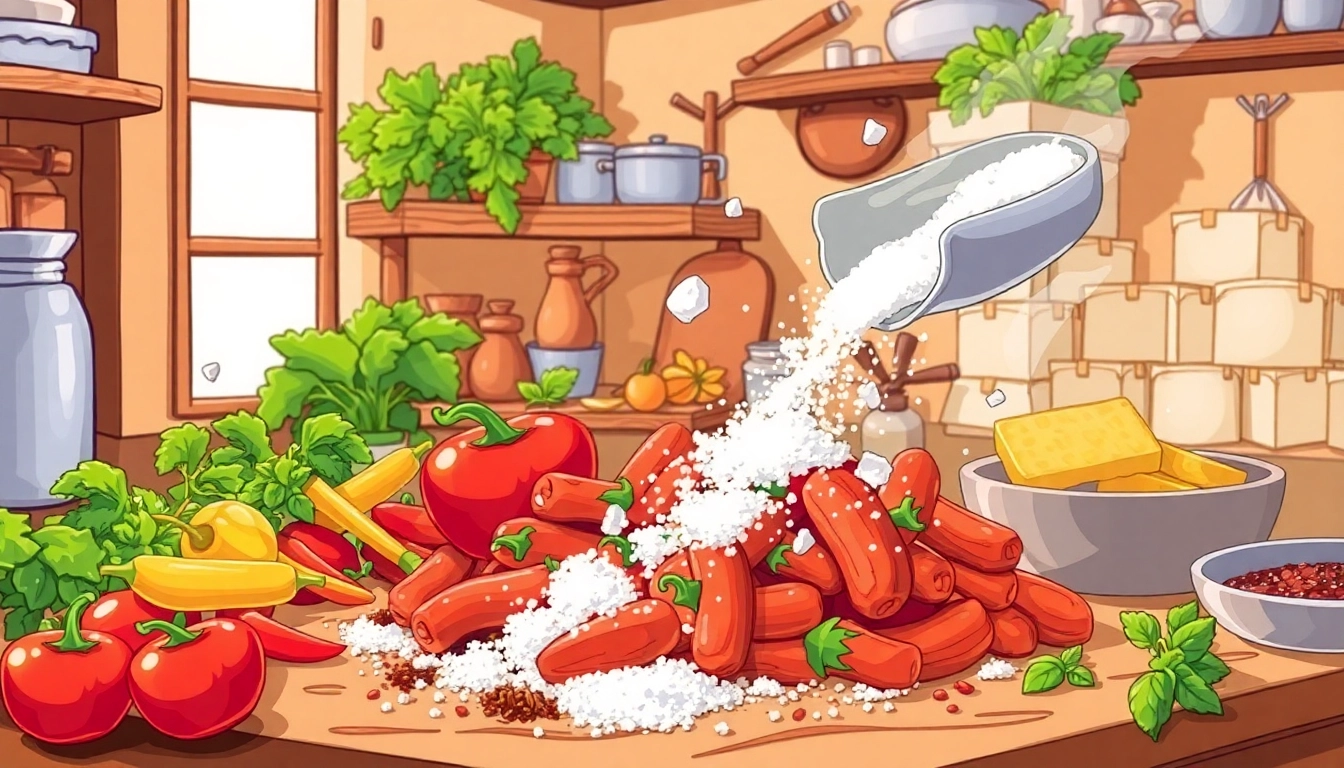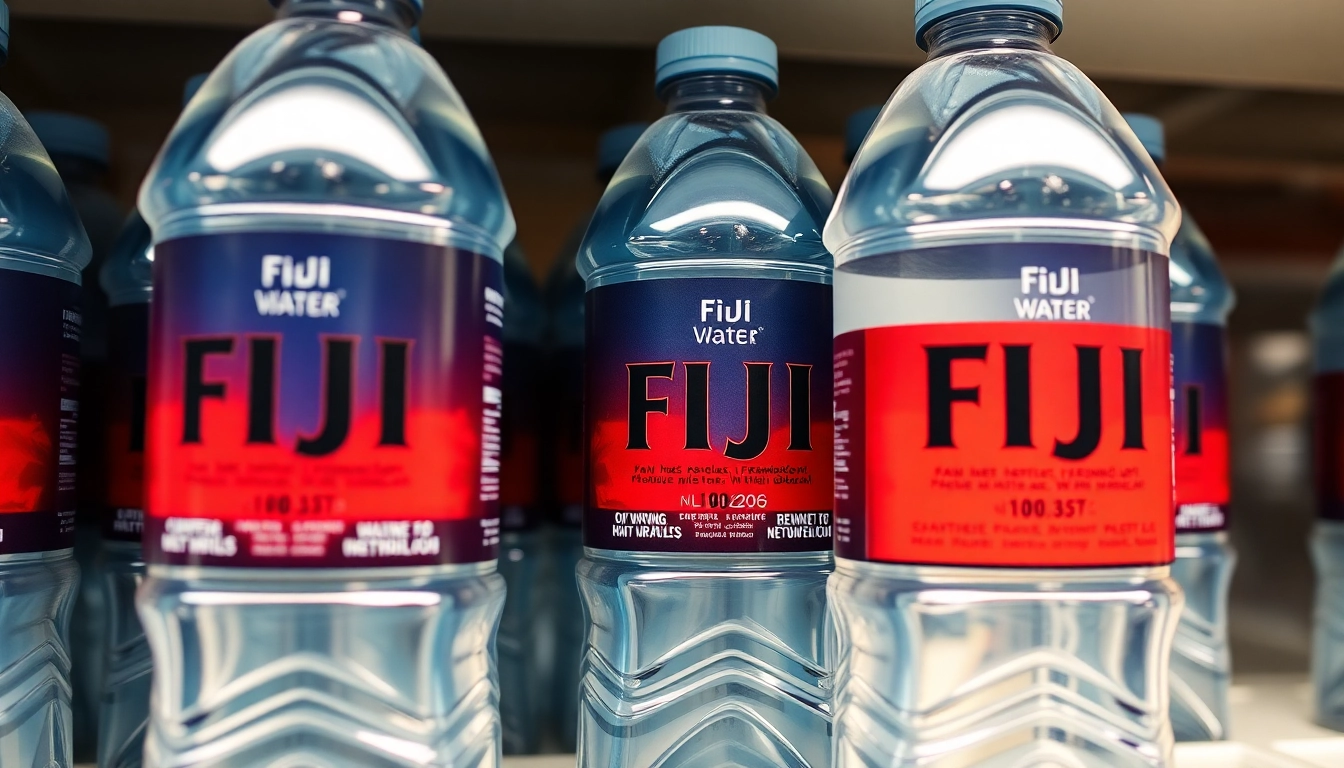
Understanding Salting: The Basics
Salting is a time-honored method of food preservation involving the application of dry edible salt to various foods. This technique is deeply rooted in history, stemming from the need to extend shelf life and enhance flavor long before the advent of refrigeration. Today, salting remains relevant for both practical and culinary reasons, providing a straightforward and effective way to preserve ingredients without the use of artificial additives. This article delves into the multifaceted world of salting, exploring its historical significance, the science behind it, various techniques, benefits, and practical applications. For more information about integrating this technique into your culinary practices, consider visiting Salting.
What Is Salting and Its Historical Significance?
Salting is primarily associated with the preservation of meats, fish, and vegetables. The practice likely dates back thousands of years, as early civilizations recognized that salt could inhibit bacterial growth and prevent food from spoiling. Ancient Egyptians used salt to preserve fish, while Romans and Greeks adopted similar techniques for meat. This preservation method became essential during times when fresh food was scarce, allowing societies to survive harsh winters and travel across long distances.
The historical significance of salting cannot be overstated. In many cultures, salted foods have contributed to various cuisines, becoming delicacies in their own right. From the cured ham of Spain to the salted cod of Scandinavia, these foods reflect regional practices and flavors shaped by geography and available resources.
The Science Behind Salting: How It Works
The effectiveness of salting lies in the science of osmosis and the properties of salt (sodium chloride). When salt is applied to food, it draws out moisture through osmosis, creating an environment that is inhospitable to bacteria and mold. This dehydration process results in a slower rate of spoilage since microbes require moisture to thrive.
As salt interacts with food, it begins a chemical exchange, where some of the moisture is replaced by brine (a salty solution). This process not only preserves the food but also intensifies flavor, creating a richer taste. Additionally, certain types of salt, such as kosher or sea salt, are often used for their mineral content and texture, which can further enhance the results.
Different Types of Salting Techniques
Salting techniques can vary widely, each suited to different food types and desired outcomes. The primary methods include:
- Dry Salting: Involves rubbing salt directly onto the food surface. This method is commonly used for meats and fish, allowing the salt to penetrate the flesh over time.
- Brining: This technique entails soaking food in a saltwater solution. Brining is ideal for poultry and vegetables, enhancing moisture retention and flavor.
- Wet Salting: Similar to brining, wet salting involves layering food with salt in a container, allowing it to draw moisture. This is often used for preserving whole pieces of meat or large fish.
The Benefits of Salting for Food Preservation
Increased Shelf Life and Safety
One of the most significant advantages of salting is the extension of shelf life. Foods preserved via salting can last significantly longer than their unprocessed counterparts. This could be particularly advantageous in reducing food waste. Moreover, salting enhances food safety by preventing the growth of spoilage-causing and pathogenic microorganisms, offering consumers peace of mind regarding foodborne illnesses.
The preservation of meats and fish, especially, has been crucial in various societies. For instance, salted cod has been a staple in diets across Europe and North America, allowing fishing communities to sustain themselves throughout the year.
Flavor Enhancements Through Salting
Beyond preservation, salting acts as a flavor enhancer. The process of salting allows flavors to deepen and intensify, transforming a bland piece of meat or vegetable into a savory delight. Salt enhances umami, a basic taste, and interacts harmoniously with other flavors, which is why many cooks recommend salting in various stages of food preparation.
For example, brining chicken before roasting results in juicy, flavorful meat, while a simple dry rub can elevate grilled steaks to gourmet status. The strategic use of salt can turn an ordinary meal into a memorable dining experience.
Cost-Effective Food Management Tips
Salting can be a cost-effective method for managing food supplies. Individuals and families can purchase meat and fish in bulk, then preserve portions for later use, reducing grocery expenses over time. Moreover, using salt to preserve seasonal fruits and vegetables can lead to savings and a reduction in food spoilage, especially in areas with limited access to fresh produce during off-seasons.
For instance, preserving tomatoes in salt or through a brining process can create flavorful additions to sauces and dishes throughout the year, broadening culinary possibilities while keeping costs in check.
Implementing Salting Techniques in Your Kitchen
Essential Tools and Ingredients for Salting
To successfully implement salting techniques in your kitchen, a few essential tools and ingredients are necessary:
- Salt: High-quality salt is paramount. Options include kosher salt, sea salt, or table salt, each offering unique properties and flavors.
- Containers: Glass or food-grade plastic containers with lids are ideal for wet and dry salting to prevent contamination and optimize flavor absorption.
- Thermometers: A digital meat thermometer will help ensure that meats are cured and cooked safely, maintaining the desired texture and doneness.
Step-by-Step Guide to Salting Foods
Implementing salting techniques can be straightforward with these guidelines:
- Choose Your Food: Select fresh and high-quality meat, fish, or vegetables for the best results.
- Decide on the Technique: Depending on the food type, choose between dry salting, brining, or wet salting based on desired outcomes.
- Prepare the Salt: For dry salting, measure an appropriate amount of salt based on the weight of the food. If brining, dissolve the salt in water, usually at a ratio of 1 cup of salt per gallon of water.
- Apply the Salt: Evenly apply the salt or place food in the brine. Ensure every surface is covered for uniform results.
- Store Appropriately: Follow specific guidelines for storing salted foods in a cool, dry place, refrigerator, or freezer, depending on the method.
Common Mistakes to Avoid When Salting
While salting can be simple, avoiding common pitfalls ensures the best results:
- Using the Wrong Salt: Not all salts are created equal; choose an appropriate type for your method.
- Over-Salting: Excessive salt can lead to overly salty foods; follow recommended guidelines for portions.
- Improper Storage: If not stored correctly, salted foods can spoil; adhere to proper guidelines for each specific type.
Exploring Advanced Salting Techniques
Brining vs. Dry Salting: Making the Right Choice
Choosing between brining and dry salting depends largely on the type of food and culinary outcome desired. Brining is excellent for enhancing moisture retention, making it ideal for lean meats like chicken and turkey. In contrast, dry salting is more beneficial for meats with higher fat content, enabling a robust flavor profile while allowing some moisture loss.
Ultimately, experimenting with both methods can yield impressive results. For example, trying a dry rub with herbs and spices or incorporating sugar into a brine can create exciting flavor combinations.
Innovative Salting Techniques for Modern Cooking
Modern culinary trends often involve creative adaptations of traditional techniques. Incorporating infused salts, such as garlic salt, smoked salt, or flavored sea salt, can elevate dishes, while blending salting with other preserving methods, like pickling or fermenting, showcases versatility.
Moreover, techniques such as sous-vide cooking—where foods are vacuum-sealed and cooked at low temperatures—can benefit from prior salting to enhance flavors, blending modern technology with age-old preservation methods.
Pairing Salting with Other Preservation Methods
Salting can also be integrated with other preservation techniques like drying or smoking. The combination of salting and dehydration allows for the creation of jerky or dried vegetables, while pairing salting with smoking imparts rich flavors to meats and fishes. This hybrid approach can yield unique flavor profiles and textures that elevate meals and extend shelf life.
Conclusion: Mastering the Art of Salting
Recap of Key Salting Techniques
Salting encompasses various techniques to enhance flavor and increase shelf life, from dry salting to brining. The choice of method should be guided by the food type and desired culinary experience. Understanding the science and practice of salting allows both novice cooks and seasoned chefs to master this valuable skill.
Final Tips on Successful Salting Practices
When practicing salting at home, remember these key tips: select quality ingredients, monitor salt quantities carefully, and take notes during the process. These habits will help refine your technique, leading to even better results over time.
Resources and Further Reading on Salting
For those eager to dive deeper into salting and food preservation, numerous resources exist, from culinary books to online courses. Additionally, well-respected food blogs and cooking schools frequently offer practical insights and innovative ideas related to salting.







